North Korea in Transition
North Korea in Transition
Politics, Economy, and Society
Edited by Kyung-Ae Park and Scott Snyder
Rowman & Littlefield Publishers, Inc.
Lanham Boulder New York Toronto Plymouth, UK
Published by Rowman & Littlefield Publishers, Inc.
A wholly owned subsidiary of The Rowman & Littlefield Publishing Group, Inc.
4501 Forbes Boulevard, Suite 200, Lanham, Maryland 20706
www.rowman.com
10 Thornbury Road, Plymouth PL6 7PP, United Kingdom
Copyright 2013 by Rowman & Littlefield Publishers, Inc.
All rights reserved . No part of this book may be reproduced in any form or by any electronic or mechanical means, including information storage and retrieval systems, without written permission from the publisher, except by a reviewer who may quote passages in a review.
British Library Cataloguing in Publication Information Available
Library of Congress Cataloging-in-Publication Data
North Korea in transition : politics, economy, and society / edited by Kyung-Ae Park and Scott Snyder.
p. cm.
Includes bibliographical references and index.
ISBN 978-1-4422-1811-6 (cloth : alk. paper) ISBN 978-1-4422-1812-3 (pbk. :
alk. paper) ISBN 978-1-4422-1813-0 (electronic) 1. Political cultureKorea (North)
2. Korea (North)Politics and government. 3. Korea (North)Economic policy.
4. Korea (North)Social conditions. 5. Korea (North)Social life and customs.
I. Park, Kyung-Ae, 1955 II. Snyder, Scott, 1964
JQ1729.5.A58N66 2013
320.95193dc23
2012024453
 The paper used in this publication meets the minimum requirements of American National Standard for Information SciencesPermanence of Paper for Printed Library Materials, ANSI/NISO Z39.48-1992.
The paper used in this publication meets the minimum requirements of American National Standard for Information SciencesPermanence of Paper for Printed Library Materials, ANSI/NISO Z39.48-1992.
Printed in the United States of America
Introduction
Scott Snyder and Kyung-Ae Park
As a closed system that has historically distanced itself even from its closest geographical and ideological neighbors, North Korea has proven to be a particularly challenging subject of study for both academic researchers and policymakers alike. Former intelligence official and U.S. Ambassador to South Korea Donald Gregg has famously referred to North Korea as Americas longest-running intelligence failure in the history of American espionage. Even in its reporting to international agencies that have programs in the country, the Democratic Peoples Republic of Korea (DPRK) provides only sketchy official statistics. This lack of information has had a direct impact on the ability of researchers to study the North, resulting in a relatively thin database of informed, comprehensive studies about the country. The near-complete hermetic seal that the regime places around the country means that outsider accounts are sparse and are largely restricted to highly controlled areas such as the capital, Pyongyang. The extreme secrecy of the country gives truth to the quip that a North Korea expert is an oxymoron. Although some might argue that this circumstance reveals more about the limits of the efforts of outsiders to understand the country than about North Korea itself, it is hard to argue with the fact that North Korea has pursued a unique development path that resists easy categorization or study.
Despite North Koreas apparent craving for isolation, the end of the Cold War, the famine in the mid-1990s, and the resulting flows of refugees out of and aid workers into the north have resulted both in greater exposure of North Korea to the outside world and in external changes that have forced it to undergo wrenching internal adjustments. As a side effect, these developments have widened the flow of information about North Korea to the outside world, providing new opportunities to observe its system and evolution. The collapse of North Koreas primary patron, the Soviet Union, in 1991, was a precipitating factor that led to the Great Famine of the mid-1990s, and this human catastrophe in turn resulted in unprecedented flows of refugees from North Korea as well as increased opportunities for international aid workers to gain access to the country. The famine also precipitated dramatic structural changes in the North Korean economy, and specifically in reliance on the market rather than the state as the primary provider of food, the reverberations of which are still being felt today. These forces have no doubt required the adaptation of North Koreas political leadership structures, although it has not resulted in fundamental change to its political system. The end of the Cold War also catalyzed adaptations in North Koreas international strategies and circumstances. The regimes long history of adeptly exploiting great power rivalries on its periphery means that the international context and the survival of the Kim dynasty are inextricably linked.
The year 2012 has long been signaled by North Korea as a potential turning point in its modern history by claiming that the centennial of the birth of the DPRKs founder would mark the emergence of North Korea as a strong and prosperous nation. The sudden death of Kim Jong Il on December 17, 2011, heightened expectations that 2012 would be a year of transition, either through an unprecedented third-generation family leadership succession or perhaps toward North Koreas systemic transformation. Elections and political transitions among all of North Koreas neighbors are influencing the regional context for Kim Jong Unsthe third-born son and successor to the recently deceased Kim Jong Ilefforts to consolidate his power and political control over the North Korean system. Thus, North Korea must adapt to both internal and external developments that will influence its future direction and prospects.
Toward a Better Understanding of North Korea in Transition
This volume builds on prior scholarship on North Korea by analyzing the forces motivating its transition in three dimensions: the political adaptation of North Korean institutions as the main sources of support for the leaderships power and political control, the impact of dramatic economic changes inside and outside North Korea and their effects on both its institutions and society, and the impact of larger, global developments on North Koreas foreign policy. In each of these three areas, this volume builds on prior efforts to understand the North Korean system, its durability, its vulnerabilities, and prospects for the future.
Leadership and Institutions
The landmark study of North Korean communism by Robert A. Scalapino and Chong-sik Lee provided a baseline for understanding the North Korean ideology and institutions in comparison with the Soviet and Chinese Communist systems, assessed the effects of nation-building and modernization efforts on the North Korean system, and evaluated the intertwining of Communist ideology and Korean tradition as a source of the systems durability. The study, published in 1972, provides a comprehensive introduction to the evolution of North Koreas institutions and methods for maintaining power and political control. The study holds up well, illustrating the lasting, foundational institutional structure and enduring characteristics of the North Korean system as it was established by Kim Il Sung. The book provides an important point of departure both for understanding the extent of institutional adaptations under Kim Jong Il and for the emergence of contemporary debates over the relative influence of North Korean institutions, ideology, and the Kim family to the institutions over which they have presided.
The system Scalapino and Lee describe borrows its primary structural features from the Soviet and Chinese systems and was monolithic, under the complete control of Kim Il Sung. But there has been a gradual evolution of North Korean institutions both under Kim Il Sungs leadership until his death in 1994 and under his son and successor Kim Jong Il. With the transition from Kim Il Sung to Kim Jong Il, the relevance of bureaucratic institutions within North Korea as influences on policy formation under Kim Jong Ils rule is easier to see. One straightforward example is that while Kim Il Sung himself always delivered a New Years address providing guidance and defining priorities for the North Korean people, that guidance was provided under Kim Jong Il in the form of a Joint Editorial from outlets representing the military, the party, and the communist youth league. A 1998 constitutional revision consolidated Kim Jong Ils rule by enhancing the role of the military at the expense of the party. Kim Jong Ils songun (military-first) politics, an institutional prioritization that served as his guiding ideology, was established.

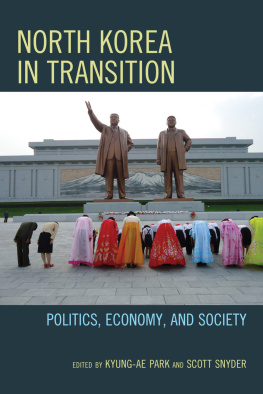


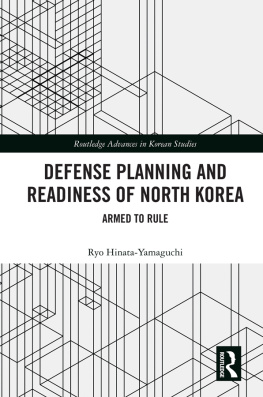
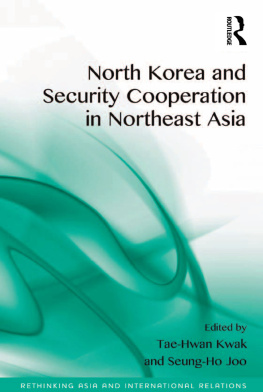

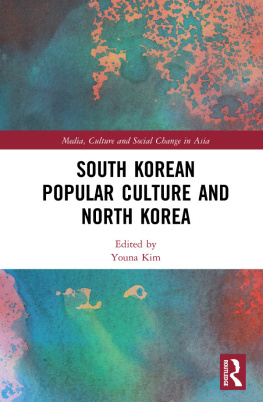
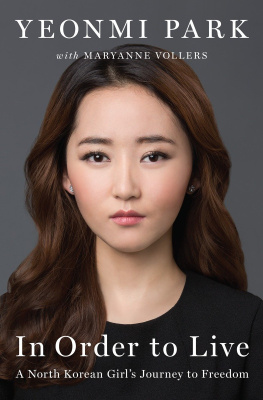
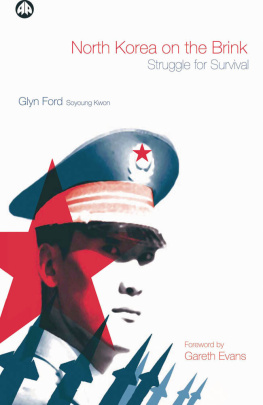

 The paper used in this publication meets the minimum requirements of American National Standard for Information SciencesPermanence of Paper for Printed Library Materials, ANSI/NISO Z39.48-1992.
The paper used in this publication meets the minimum requirements of American National Standard for Information SciencesPermanence of Paper for Printed Library Materials, ANSI/NISO Z39.48-1992.